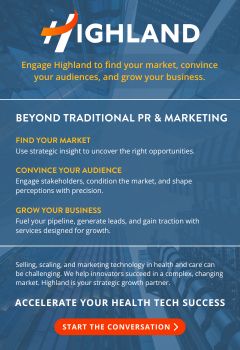By: Matt Croucher, Chief Commercial Officer at electric vehicle (EV) charge point operator (CPO), Believ, discusses how transport planning professionals can play their part in driving forward EV charging infrastructure rollout, and what the next few years will bring.

Tell us a bit about your career, and what brought you to EV charging?
For almost two decades, I worked as transport planning consultant specialising in sustainable transport. I was fortunate to be involved in a broad range of projects, from designing bus stations, to setting up car clubs and monitoring air quality for schools.
I became involved in planning EV charging infrastructure in the 2000s, when the renewable energy industry was growing rapidly, but EVs were still in their infancy. Realising we were soon going to be able to power cars and other vehicles with clean renewable energy, with all the benefits that brings, made it clear to me that electrification was going to be key to the future of any clean transport policy.
Reducing our dependency on private vehicles, and helping the general public to drive less, is a crucial part of sustainable transport planning. Wherever possible, I would always advocate the sustainable travel hierarchy, where walking, cycling and public transport are given priority over driving. However, car usage still makes up 60% of all UK trips, and 78%* of distance travelled, and realistically will always hold a significant share of our journeys nationally, even in the most optimistic future scenarios. The electrification of transport is therefore essential to reducing CO2 emissions by moving away from fossil fuels.
But it wasn’t until I managed an EV project on behalf of Transport for London, and later became the Zero Emission lead for WSP, that EV charging became my career priority. One of my core tasks was to help local authorities, transport agencies or landowners in developing their EV strategies, and in particular, to forecast future infrastructure requirements. It was in this last role that I led the development of a forecasting tool to predict the UK’s charge point infrastructure need and became increasingly specialised in this area.
*https://www.gov.uk/government/statistics/national-travel-survey-2023/nts-2023-car-availability-and-trends-in-car-trips
How has your planning experience influenced your EV charging infrastructure career?
It greatly influenced my choice of employer. For me, Believ stood out because it is hardware agnostic, giving it the flexibility to install any speed of charge point; that appealed to the transport planner in me. It meant we could offer a solution based on the individual needs of the landowner, the site and its average driver dwell times. Getting this right is essential to ensuring charging infrastructure serves existing EV drivers and attracts others to make the transition.
I was also attracted to Believ’s industry-leading backing and the unique relationship it has with its delivery partner, Virgin Media O2. This was important to me because with contracts typically lasting up to 20 years, I knew our partners need confidence that their partners can be relied upon in the long term.
I continue to draw on the transport planning fundamentals in my role as Chief Commercial Officer at Believ, including my focus on understanding travel behaviours, modelling demand and planning transport infrastructure investments. Taking a data-led approach to help us install future-proofed infrastructure.
How long have you been at Believ and what have been your highlights?
I joined Believ in 2022 and was promoted to Chief Commercial Officer in 2024. The new role was designed to strengthen the leadership of Believ’s rapidly growing number of people and teams and ensure we are all aligned to the same commercial goals.
Last year was incredibly rewarding as we saw Believ’s personnel head count and socket numbers double in size, and our private sector team break into new markets. Another major highlight was the successful negotiation of the joint deal with the London boroughs of Redbridge and Newham Councils and Uber to fund and install more than 1,000 charge points across East London. Utilisation has been very high, and it is a great example of private and public industries working together to serve a public need and accelerate the EV charging rollout.
What do the next five years look like for the EV charging industry?
After a period of wide-spread delays in the public sector’s EV charging rollouts, LEVI funding has now been allocated and tenders are out, and we will see around 100,000 charge points commissioned this year. Putting this into context, at the end of April 2025 the UK had 79,654 public chargers installed which provided 114,700 sockets**, so the next couple of years should see a steep acceleration in infrastructure deployment.
This year is proving to be a very significant year for the charge point industry, with CPOs under pressure to deliver on what they promise, and the importance of financial backing, delivery capacity and experience coming to the fore. Drivers will see a very tangible increase in charge point infrastructure visibility – which will be incredibly positive in persuading them to make the switch.
**https://www.zap-map.com/ev-stats/how-many-charging-points
If you had two wishes that would help accelerate the rollout of EV charging, what would they be?
Continued funding by Government to support recruiting local authority EV personnel, not only the officers directly responsible for the EV infrastructure itself, but also across procurement and legal departments – where at present you often see delays and back logs of up to 12 months.
Improved data sharing by DNOs (distribution network operators) to better enable planning and site design. Whilst things are improving, large areas of the network still lack good quality digitised mapping. We can’t build infrastructure without a connection to the power grid, and you see instances where a site is chosen, commercials are agreed and then there is a wait of up to two years for a connection.
Lastly, what EV do you drive? And how do you find the public charging experience?
I have a Cupra Born, which I love. I’ve had an EV for six years now and could never imagine going back; for me it provides a superior driving experience in every way.
The charging experience is sadly still mixed. Most of the time things work and are straight forward, but even if it is only one occasion in ten that there is a hiccup, it can still be very inconvenient and frustrating. While there is still a way to go to achieve country-wide convenience, there are lots of passionate and committed professionals working on it, and I have every confidence that in the not-too-distant future, we will have a first-class charging network. You could say, I believ.







Recent Comments